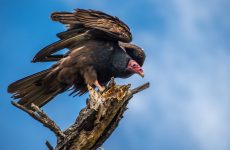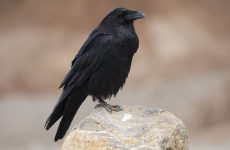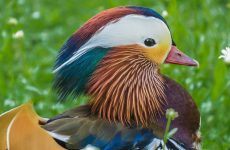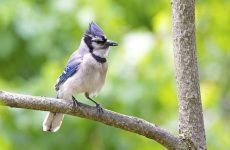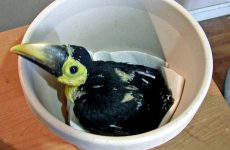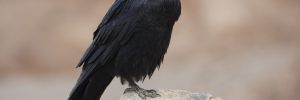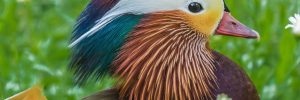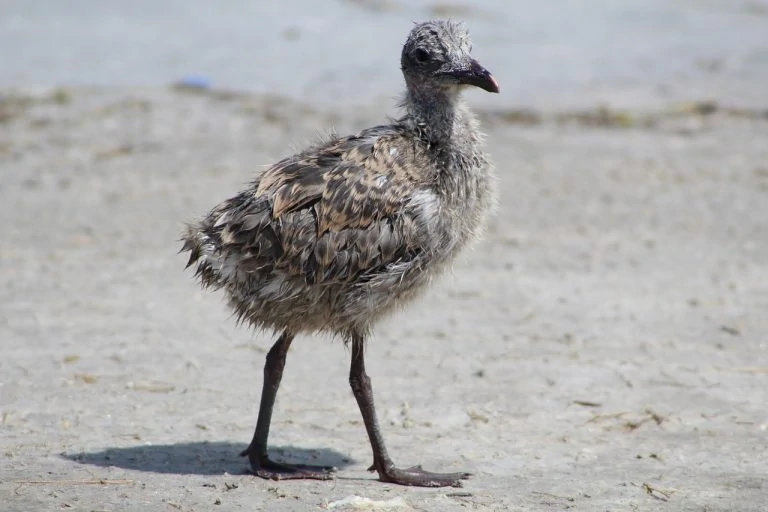
While on vacation by the sea we noticed some baby gulls on a rooftop opposite.
They were just standing on the roof with no obvious nest and too young to fly. It got me wondering about baby seagulls and why I have not seen them before and how precarious their survival seemed that high with nothing protecting them from the wind and weather.
So I decided to find out more about these cute fluffy baby birds that will grow up to be large, noisy and intimidating adults that try to steal our food.
Baby seagulls are called gull chicks
There are no birds officially called seagulls, as they are in fact just different types of the more than 50 species of gulls or terns that mostly live near the sea and have become known collectively as seagulls.
Baby seagulls would actually be called gull chicks and do not have a unique name like baby owls being called owlets.
Seagull eggs are camouflaged in a speckled buff or olive color
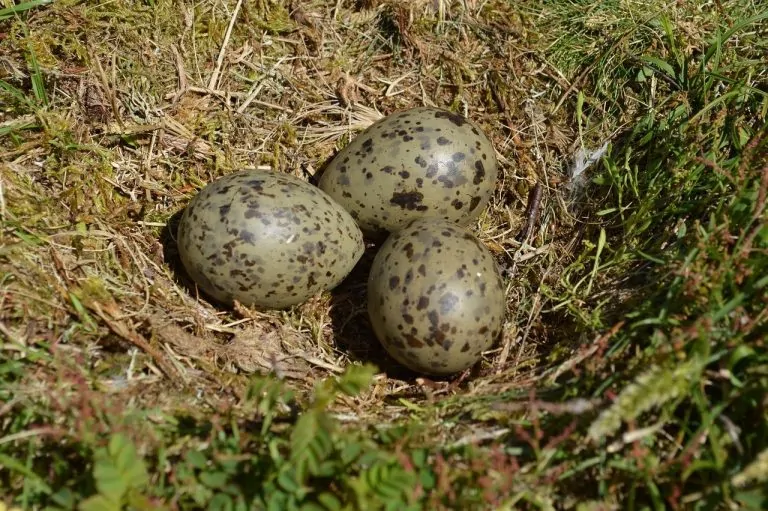
Seagulls lay two or three speckled eggs that are light green, buff, or olive with darker splotches.
Gulls are usually monogamous and stay with their partner for many years. Both parents defend the eggs and nest area by warning with threat displays and making loud screams.
Seagulls incubate their eggs for around 30 days in May and June for the most common gull, the herring gull. Incubation may be less for smaller gulls.
Seagull nests are often on the ground but might be on cliff ledges or rooftops
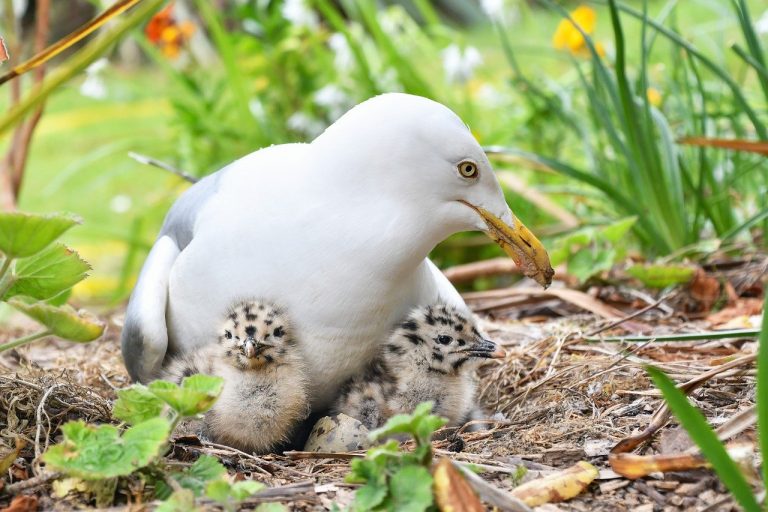
Seagulls make nests in soft sand, soil, or vegetation hidden behind a rock or log to hide them from predators and to protect them from the wind.
They also make them in difficult-to-reach locations to protect them from predators such as rooftops or cliff ledges.
Gulls use twigs feathers, vegetation, plastic and rope to create the nest and lining.
Baby seagulls are a soft downy mottled brown color
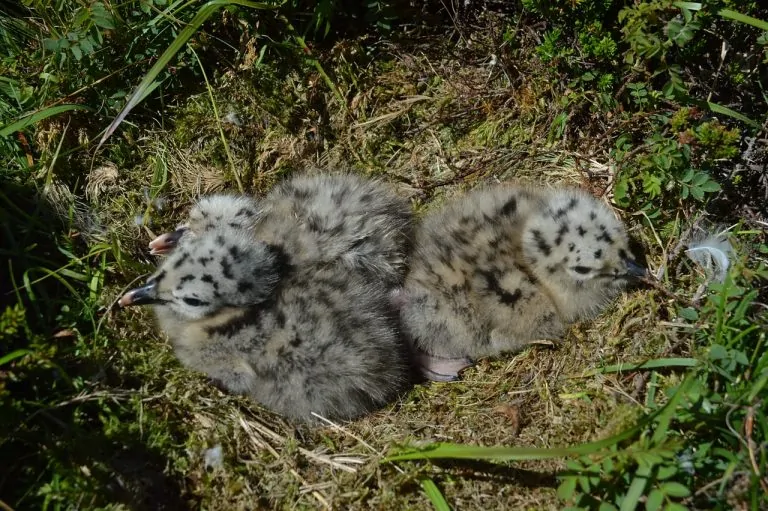
Seagull chicks are born with their eyes open and they are a soft downy mottled brown color.
Gulls stay a mottled brown color for the first few years. They take up to 4 years to become the classic white and gray color.
Baby seagulls cry to demand to be fed and if threatened
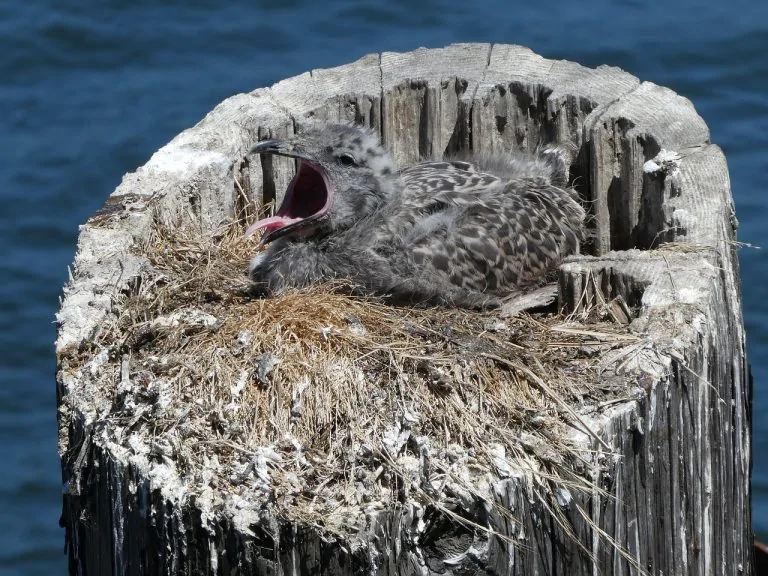
Baby seagulls make begging calls to demand food as soon as they hatch. As the chick grows and gets stronger these calls get louder.
When baby seagulls are threatened they make shrill cries.
Both the begging call and shrill cry are sounds that adult seagulls make.
Leave a fallen baby seagull as they may not be in danger
Baby seagulls leave the nest very early at only a day or so old. So they do not have the protection the nest provides. Seagulls also nest on rooftops and other high places that means baby seagulls are at risk of falling.
If you see a baby seagull that is not injured leave it alone and observe if a parent returns to feed them.
The stress of being handled and the potential for the parents to abandon baby birds is greater if they have been moved or handled.
If the baby seagull looks in danger then it can be moved to a safer place near to where it is found, but watch out as seagulls are very protective of their young and they may try to defend them.
What to feed baby seagulls
If you do provide food for a baby seagull then dry kitten biscuits soaked in water are suitable. Do not feed too much as they may be sick and use tweezers as a substitute for their parents’ beaks.
Baby seagulls can fly from 45 days
Seagull chicks can leave the nest within 24 hours but they stay around the nest area for 40 days.
They begin to fly at 45 days but they are still fed by their parents for another 3 to 4 weeks.
How baby seagulls learn to fly
Baby seagulls learn to fly by being encouraged by their parents to follow, especially if they are hungry.
It may take several attempts and some short practice jumps before they take off fully. Baby seagulls will also spend a lot of time building up their strength beforehand by wing flapping and taking short jumps straight up.
Baby seagulls stay with their parents for up to 6 months
Seagull chicks can leave the nest within 24 hours but they stay around the nest area for 40 days.
They begin to fly at 45 days but they are still fed by their parents for another 3 to 4 weeks.
Some baby seagulls will stay with their parents for up to 6 months after leaving the nest and will be fed if they keep demanding food, but most will join up with other immature gulls.
I hope you enjoyed reading about baby seagulls, check out these other great articles about baby birds and bird facts.

